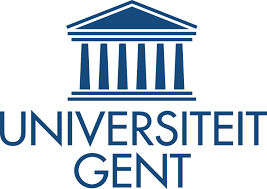预约演示
更新于:2025-05-07
DTYMK
更新于:2025-05-07
基本信息
别名 CDC8、deoxythymidylate kinase、dTMP kinase + [4] |
简介 Catalyzes the phosphorylation of thymidine monophosphate (dTMP) to thymidine diphosphate (dTDP), the immediate precursor for the DNA building block dTTP, with ATP as the preferred phosphoryl donor in the presence of Mg(2+). |
关联
2
项与 DTYMK 相关的药物靶点 |
作用机制 DTYMK inhibitors |
在研机构- |
原研机构 |
在研适应症- |
非在研适应症 |
最高研发阶段无进展 |
首次获批国家/地区- |
首次获批日期1800-01-20 |
靶点 |
作用机制 DTYMK inhibitors |
在研机构- |
原研机构 |
在研适应症- |
非在研适应症 |
最高研发阶段无进展 |
首次获批国家/地区- |
首次获批日期1800-01-20 |
100 项与 DTYMK 相关的临床结果
登录后查看更多信息
100 项与 DTYMK 相关的转化医学
登录后查看更多信息
0 项与 DTYMK 相关的专利(医药)
登录后查看更多信息
516
项与 DTYMK 相关的文献(医药)2025-03-13·Journal of Medicinal Chemistry
Thymidylate Kinase-Targeted Antimicrobial Peptides via Phage Display: A Novel Strategy against Gram-Negative Bacteria
Article
作者: Cha, Sina ; Xue, Chenyu ; Li, Yuwen ; Fang, Yuxin ; Zhao, Lu ; Dong, Na ; Hu, Mingyang
2025-02-07·Current Medicinal Chemistry
Exploring the Dynamics of Asparagus racemosus Phytochemicals as Dual Target Inhibitors of Monkeypox Virus
Article
作者: Mishra, Saurav Kumar ; Bourhia, Mohammed ; Chandra, Anshuman ; Akash, Shopnil ; Mitra, Namrata ; Jardan, Yousef A. Bin ; Georrge, John J. ; Singh, Nagendra ; Krishna, Nikita
2025-02-01·Microbial Pathogenesis
Structural characterization, cytotoxicity, antibiofilm activity, and synergistic potential with molecular docking analysis of ibuprofen-derived hydrazide against bacterial pathogens
Article
作者: Carvalho Aguiar, Francisco Kauê ; Marinho, Emmanuel Silva ; Frota Araújo, Ingrid Maria ; Santos, Hélcio Silva Dos ; Costa, Renata Albuquerque ; Carneiro, Victor Alves ; Ferreira da Silva, Benise ; Mesquita Cajazeiras, Francisco Ferdinando ; Onassis Cardoso Viana Gomes, Akenaton ; Rodrigues Teixeira, Alexandre Magno ; Gomes Pereira, Antonio Mateus ; Marinho, Márcia Machado
1
项与 DTYMK 相关的新闻(医药)2023-07-24
·药创客
点击上方图片链接可报名近日,上海交通大学附属瑞金医院王忠敏、崔文国共同通讯在《Nature Communications》上发表研究论文“Interventional hydrogel microsphere vaccine as an immune amplifier for activated antitumour immunity after ablation therapy”,通过在雄性小鼠的原位胰腺癌模型中的试验表明,水凝胶微球疫苗以安全有效的方式将免疫冷肿瘤微环境转化为热环境,从而显著提高存活率并抑制远处转移瘤的生长。研究结果提示,该团队开发了一种用于消融后免疫疗法的癌症水凝胶微球疫苗。与最近专注于肿瘤内递送外源性抗原或免疫佐剂的工作相反,水凝胶微球疫苗充当一般免疫放大器,触发CD103 CD11b+− cDC1介导的抗原交叉呈递级联的火箭样扩增,导致消融治疗后内源性CD8 T细胞的抗肿瘤免疫力急剧增强。简而言之,我们将Cas9质粒和CD40L分别加载到脂质体和CaCO+3纳米颗粒中,然后将它们与FLT3L细胞因子和透明质酸(HA)混合,以在微流体控制下创建水凝胶微球疫苗。水凝胶微球疫苗诱导cDC1介导的抗原交叉呈递和CD8 T细胞活化的火箭样级联扩增,以安全有效的方式促进胰腺癌从“冷”肿瘤向“热”肿瘤的转化。最后,水凝胶疫苗有效激活全身抗肿瘤免疫,抑制远处转移,提高荷瘤小鼠存活率。将cDC1活化的水凝胶微球疫苗用作一般免疫放大器,在消融治疗后扩增cDC1/CD8 T细胞抗肿瘤轴。总之,水凝胶微球疫苗提供了一种通过促进cDC8介导的免疫级联来有效扩增内源性CD1 T细胞抗肿瘤免疫的策略。与传统的ICB疗法相比,联合策略也可能是未来肿瘤内免疫疗法的新兴趋势。参考资料:https://www.nature.com/articles/s41467-023-39759-w点击上面图片报名识别微信二维码,添加小编,符合条件者即可申请加入微信群!请注明:姓名+研究方向!声明:本文旨在传递更多信息,版权归原作者所有。原创文章转载均需经过授权并注明来源,如涉及内容、版权或其他问题请时联系小编删除!文章仅代表作者个人观点,并不代表公众号立场。本公众号拥有对此声明的最终解释权!投稿邮箱:yck19876@163.com
疫苗免疫疗法
分析
对领域进行一次全面的分析。
登录
或

Eureka LS:
全新生物医药AI Agent 覆盖科研全链路,让突破性发现快人一步
立即开始免费试用!
智慧芽新药情报库是智慧芽专为生命科学人士构建的基于AI的创新药情报平台,助您全方位提升您的研发与决策效率。
立即开始数据试用!
智慧芽新药库数据也通过智慧芽数据服务平台,以API或者数据包形式对外开放,助您更加充分利用智慧芽新药情报信息。
生物序列数据库
生物药研发创新
免费使用
化学结构数据库
小分子化药研发创新
免费使用

